#Washington County Museum of Fine Arts
Text
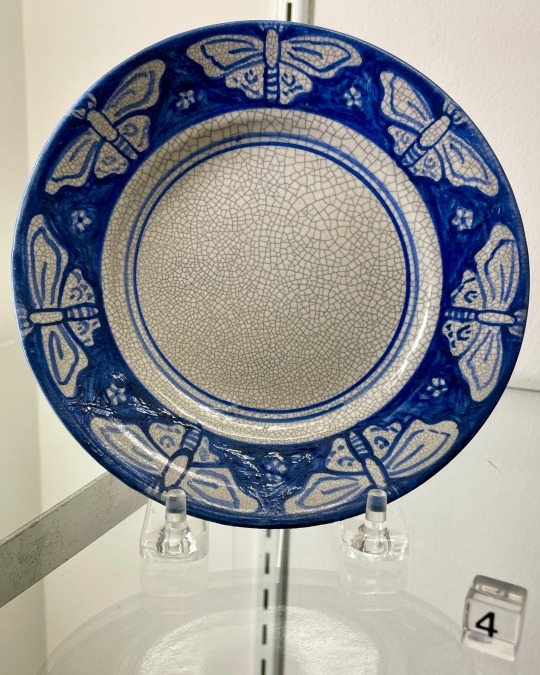
1. Dedham Pottery (Dedham, MA, 1896-1943)
Moth Plate, 1931
Glazed earthenware
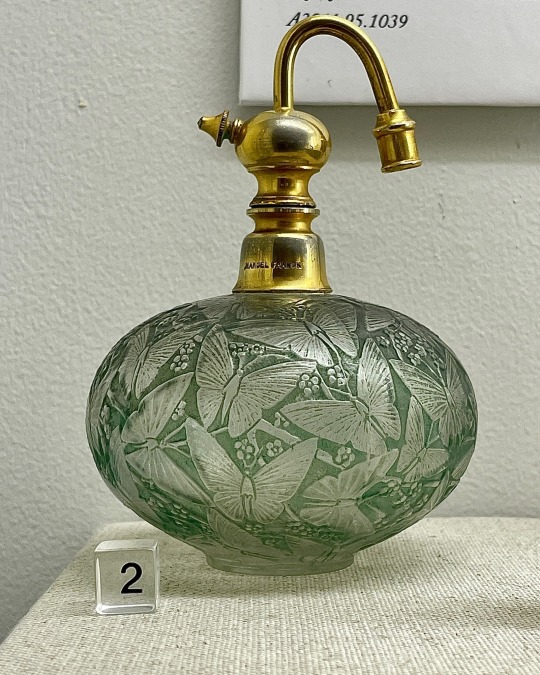
2. René Lalique (French, 1860-1945)
Papillons Vaporizer, early 20th c.
Pressed glass & brass
Both on display at Washington County Museum of Fine Arts (Hagerstown, MD, USA)
#Dedham Pottery#Rene Lalique#20th century art#American art#French art#European art#Washington County Museum of Fine Arts#museum visit#decorative arts#vaporizer#plate#ceramics#glasswork#art glass#Art Nouveau#Art Deco#animals in art#Lepidoptera in art#butterflies#moths
130 notes
·
View notes
Text
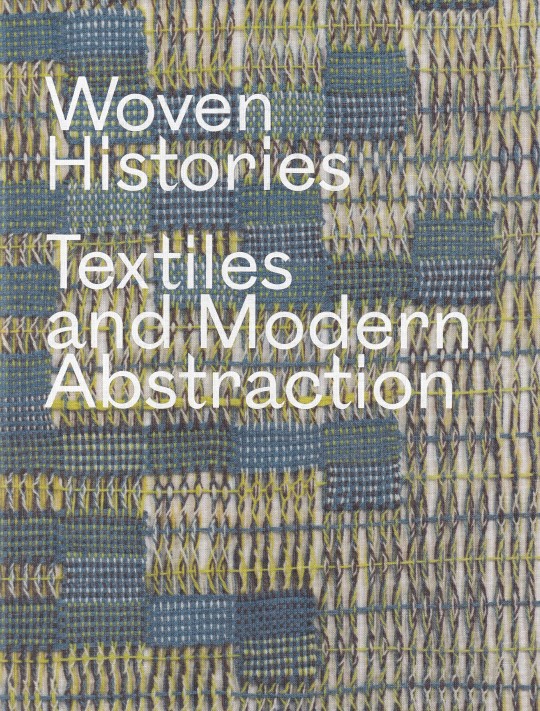
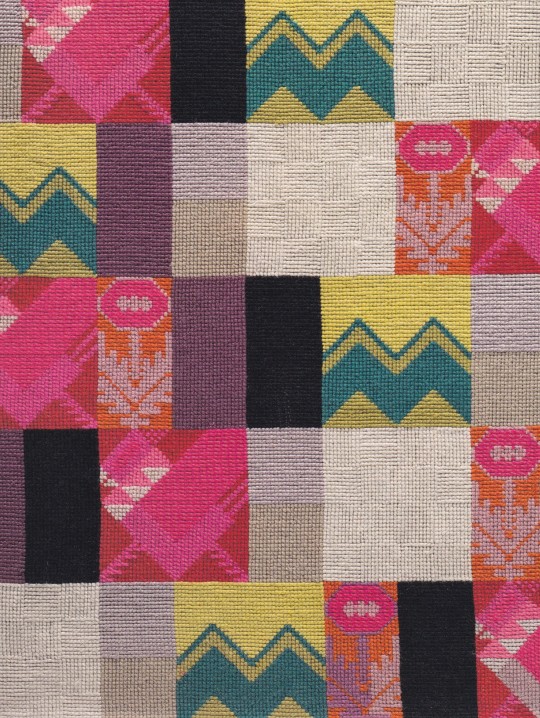
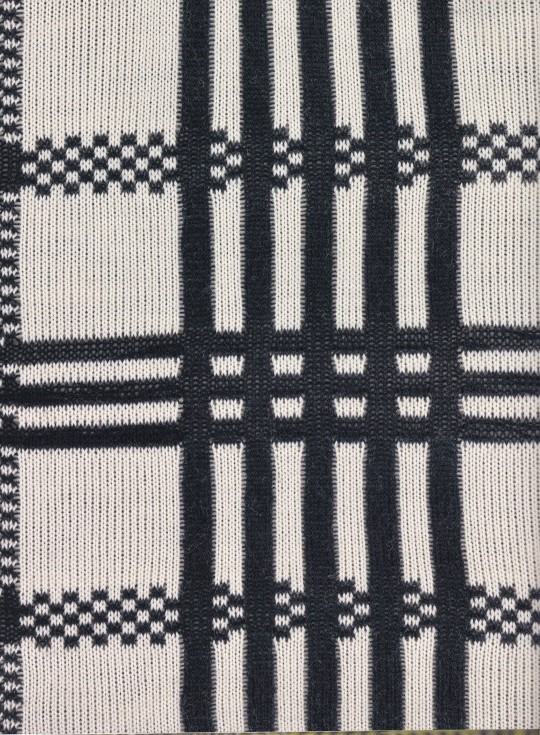



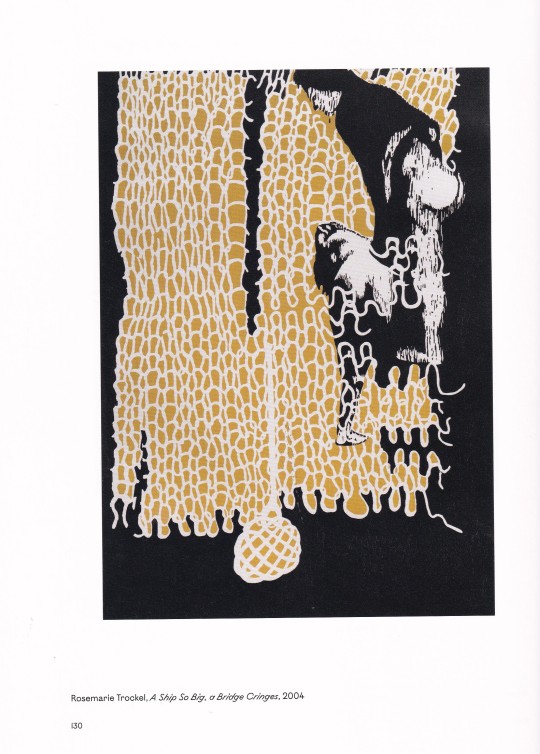





Woven Histories
Textiles and Modern Abstraction
Production by Brad Ireland and Christina Wiginton, Editing by Magda Nakassis,
National Gallery of Art, Washington copublished by The University of Chicago Press, 2023, 284 pages, ISBN 978-0-226-82729-2
euro 65,00
email if you want to buy [email protected]
Exhibition dates : Los Angeles County Museum Art 2023, Washington Nat.Gall.Art 2024, Ottawa Nat.Gall.Canada 2024,New York MoMA 2025
Richly illustrated volume exploring the inseparable histories of modernist abstraction and twentieth-century textiles.
Published on the occasion of an exhibition curated by Lynne Cooke, Woven Histories offers a fresh and authoritative look at textiles—particularly weaving—as a major force in the evolution of abstraction. This richly illustrated volume features more than fifty creators whose work crosses divisions and hierarchies formerly segregating the fine arts from the applied arts and handicrafts.
Woven Histories begins in the early twentieth century, rooting the abstract art of Sophie Taeuber-Arp in the applied arts and handicrafts, then features the interdisciplinary practices of Anni Albers, Sonia Delaunay, Liubov Popova, Varvara Stepanova, and others who sought to effect social change through fabrics for furnishings and apparel. Over the century, the intersection of textiles and abstraction engaged artists from Ed Rossbach, Kay Sekimachi, Ruth Asawa, Lenore Tawney, and Sheila Hicks to Rosemarie Trockel, Ellen Lesperance, Jeffrey Gibson, Igshaan Adams, and Liz Collins, whose textile-based works continue to shape this discourse. Including essays by distinguished art historians as well as reflections from contemporary artists, this ambitious project traces the intertwined histories of textiles and abstraction as vehicles through which artists probe urgent issues of our time.
24/12/23
#Woven Histories#textiles#modern abstraction#Anni Albers#Sonia Delaunay#Popova#Stepanova#Lenore Tawney#Sheila Hicks#textiles books#fashion books#fashionbooksmilano
59 notes
·
View notes
Text
Maria Uhden (1892-1918) was a German painter and printmaker.
Uhden was born in Coburg, Germany. She was part of the German Expressionist movement. She was married to fellow painter Georg Schrimpf.
Her work is in the collection of the Los Angeles County Museum of Art, the Metropolitan Museum of Art, the Museum of Modern Art, the National Gallery of Art, and the Fine Arts Museums of San Francisco.
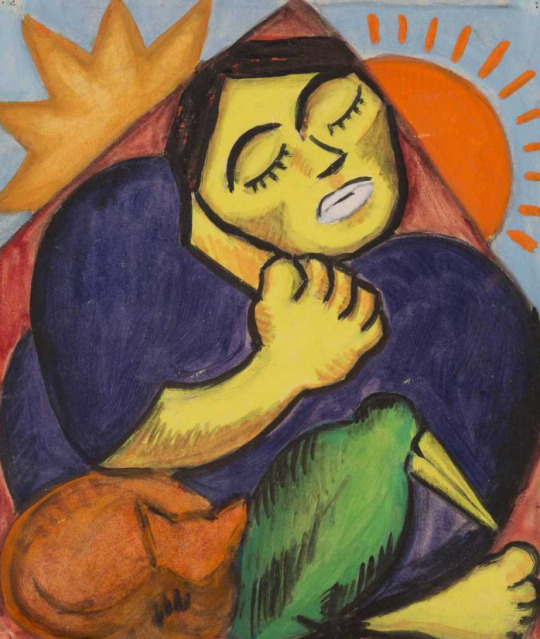
Frau mit Vogel (Woman with Bird) • 1917 • Watercolor on paper, mounted on black cardboard • unknown location

Stadt (City) • c. 1917
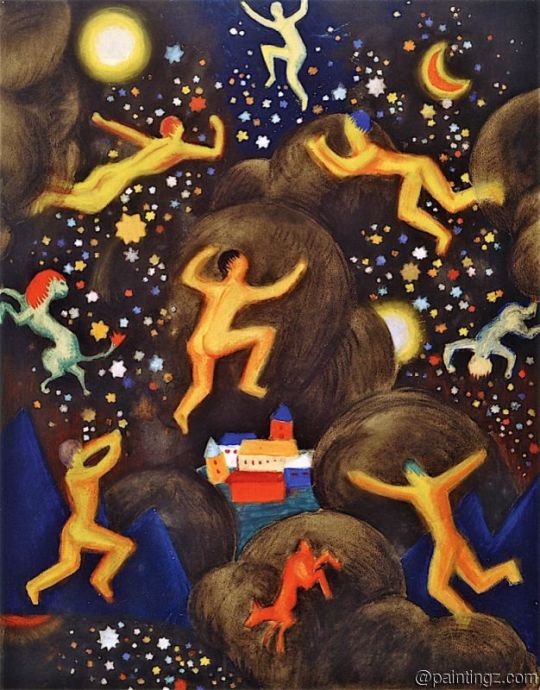
Composition • 1915 • Kunstmuseum, Bern, Germany
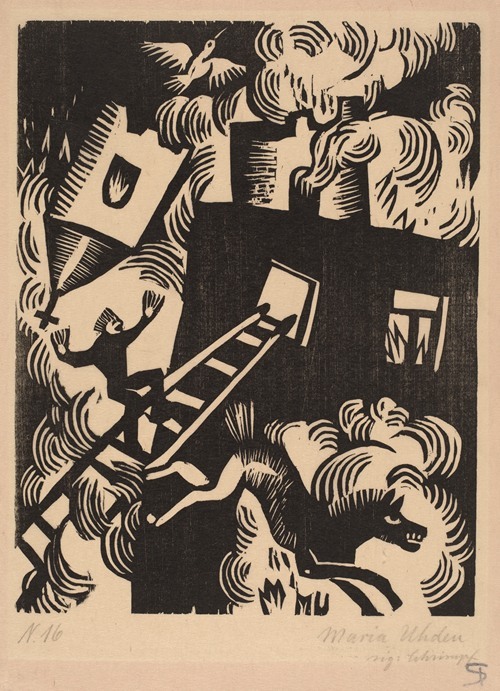
Burning House • 1918 • Linoleum cut • Unknown location

Tanz (Dance) • 1918 • Linoleum cut • Museum of Modern Art, New York

Ruhende Zigeuner (Resting Gypsies) • 1919 • Woodblock in black on Japanese paper • National Gallery of Art - Washington, D.C.
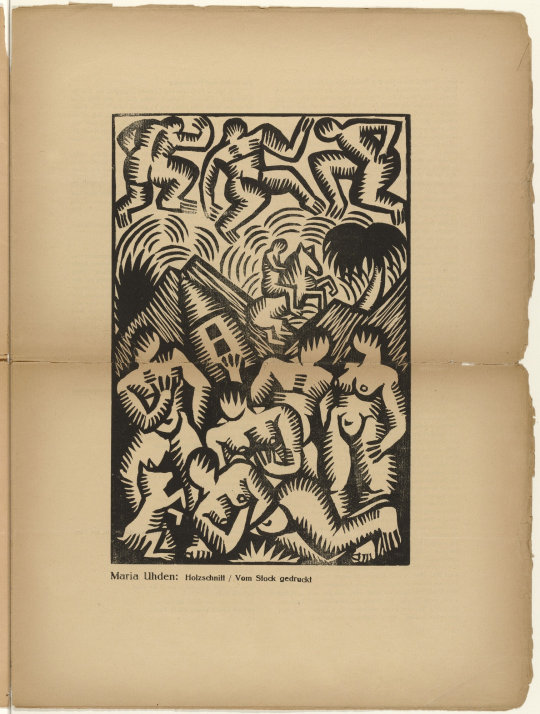
Acht Akte und Reiter in Landschaft (Eight Nudes and Rider in Landscape) • (plate, p. 119) from the periodical Der Sturm • Wochenschrift für Kultur und Künste, vol. 8, no. 8 (Nov 1917)
Source: German Expressionist Digital Archive Project
#painting#art#fine art#art history#german artist#early 20th century art#german expressionism#printmaker#linocut#woodcut#maria uhden#woman artist
7 notes
·
View notes
Text

Harry J. Ahysen
May 1, 2006
Harry J. Ahysen
Retired from Sam Houston State University
Harry J. Ahysen, 77, of 542 Washington Avenue, Washington C.H., Ohio passed away Sunday, April 30, 2006 at 7:45 a.m. at the Court House Manor Nursing Home where he had been a patient the past week. He had been in failing health.
Mr. Ahysen was born Sept. 6, 1928 in Port Arthur, Texas, the son of Harry J. and Lillian May Witherup Ahysen. He lived most of his life in Texas before moving to Washington C.H. in 1986.
He was a graduate of the University of Houston and a received a Master’s Degree in Fine Arts from the University of Texas.
He retired in 1994 as a full professor after teaching 31 years in the art department at Sam Houston State University in Huntsville, Texas and holds the title of Distinguished Professor Emeritus, the first ever bestowed by the University on a professor of Art. Following his retirement, he taught at Southern State Community College in 1994-95.
The 67th Legislature of Texas named Mr. Ahysen State Artist of Texas in 1980 and 1981 and he is one of ten official Coast Guard artists. Seven of his works are a part of the Coast Guard Collection. He has more than a dozen murals in various locations throughout the county and his art can be found in museums and collections around the world.
Mr. Ahysen was well known as musician. He played trumpet with the Harry James’ Band and traveled extensively with the band during the mid-1940’s. For many years he was a member of the local Community Band and, until recently, faithfully served as bugler with the Honor Guard of the Veterans of Fayette Co.
He was a veteran of the United States Navy and served during the Korean Conflict. He was a member of Paul H. Hughey Post #25 of the American Legion as well as the Veterans of Fayette Co. Honor Guard.
Mr. Ahysen was a member of the St. Andrew’s Episcopal Church.
Allen Simons
He was preceded in death by his father in 1934; his mother in 1992; his step-father, Frank E. Kinyon in 1992; a twin brother, Thomas C. Ahysen in 1999 and a sister, Lillian C. Tritico in 2006.
Mr. Ahysen is survived by his wife, the former Alice Eileen Ehrenfeld, whom he married June 19, 1971 and a daughter, Susan Ahysen of 542 Washington Avenue.
BOLIVAR
2023
Allen Simons
Retired clergy, living in Western Colorado, a family friend of The Ahysens, and a childhood infatuate of the lighthouse on Point Bolivar.
8 notes
·
View notes
Photo

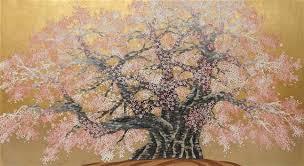



The widest and the most beautiful trees - woodblock prints by Namiki Hajime, b 1947, Japan.
Hajime Namiki was born in Tokyo in 1947. In 1974 he joined the Japanese Sculpture Association and from 1974 through 1978 exhibited many of his works. In 1978 Namiki also began making woodblock prints which have been widely exhibited. The artist self-carves his blocks and self-prints each work using traditional methods. The works are printed on gold and silver leaf, which heightens the impact of the image. His prints feature trees, forest settings, Mt. Fuji and Dragons. Namiki's works are in the collection of the White House, Washington D.C., the University of Wisconsin, Hewlett Packard Center in Palo Alto as well as numerous private collections. Also there are at least 22 different prints by him in the Art Institute of Chicago and two in the Los Angeles County Museum of Art. There is one in the Library of Congress, another one in the Museum of Fine Arts in Houston and at least three in the New Orleans Museum of Art.
https://www.artelino.com/articles/hajime-namiki.asp
https://woodblockprint.org/index.php/Detail/entities/68
8 notes
·
View notes
Photo

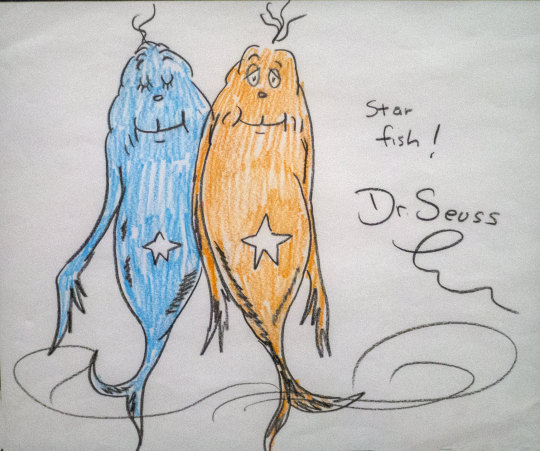

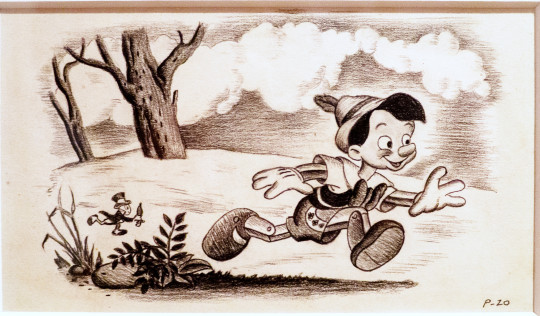
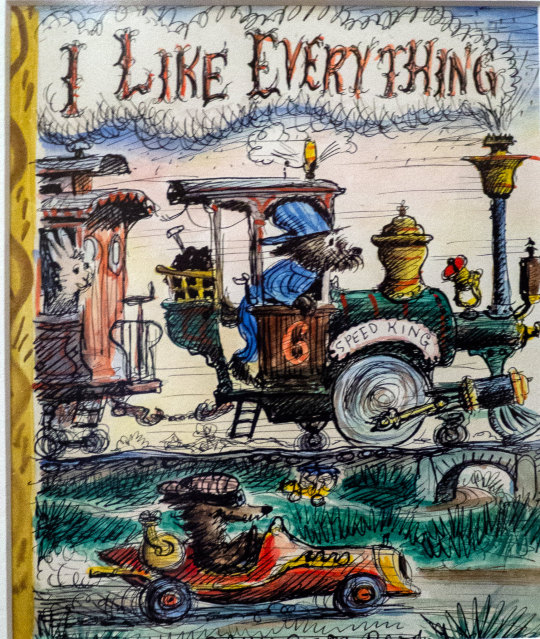
Childhood Favorites: 100 Years of Children’s Book Illustration by Skatole Grudnick
Via Flickr:
Childhood Favorites: 100 Years of Children’s Book Illustration. Illustrators represented, including Rosemary Wells, Richard Scarry, Chris Van Allsburg, Hilary Knight, David Shannon, and Dennis Nolan. Some of the characters of literature represented include Babar, Eloise, Madeline, the Cat in the Hat and Dick & Jane. Nov. 25, 2023–March 17, 2024 Washington County Museum of Fine Arts 401 Museum Drive Hagerstown, MD 21741
1 note
·
View note
Text
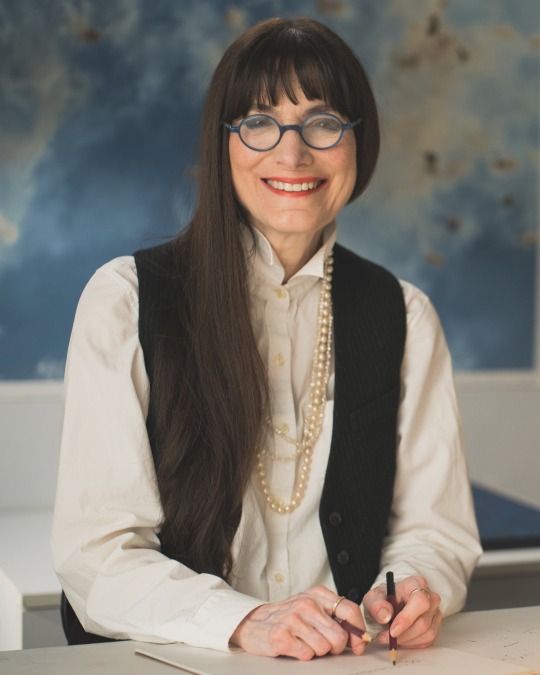

Nancy Burson ( #bornonthisday 1948) is an American artist known for creating photographs using computer morphing technology, including the Age Machine, Human Race Machine and Anomaly Machine. Via Wikipedia
Nancy Burson combined art and innovation in a way that challenged photographic truth at the birth of digital manipulation. She is best known for her pioneering work in morphing technologies which age-enhance the human face and still enable law enforcement officials to locate missing children and adults. Her Human Race Machine, commissioned by Zaha Hadid for the London Millennium Dome, was used for over a decade as a diversity tool that provided viewers with the visual experience of being another race.
Her work is included in museums worldwide including the MoMA, Metropolitan Museum, and the Whitney Museum in New York City, as well as the Victoria and Albert Museum in London, the Center Georges Pompidou in Paris, the LA County Museum of Art and the Getty Museum, MoMA (San Francisco), the Museum of Fine Arts in Houston, and the Smithsonian Museum in Washington DC, as well as many others. Source and artworks here:
katevassgalerie.com/nancy-burson
#NancyBurson #Americanartist #computermorphingtechnology #AgeMachine #artherstory #artbywomen #womensart #palianshow #art #womenartists #femaleartist #artist #katevassgalerie
0 notes
Text
Elevation Excavating And Concrete

Colonial Beach, Virginia, is a small river - and beach town on the Northern Neck of the Virginia peninsula. It is bordered by Monroe Bay, Potomac River, and Monroe Creek. The town is home to a variety of businesses, and people frequently visit to see the region's historic architecture and culture.
Visitors can experience a wide assortment of water-based sports and recreation, including windsurfing and sailing. The Museum at Colonial Beach is located on Hawthorne Street and offers information about the history of the area. The museum is filled with excellent photographs as well as documents, artifacts, and other historical documents.
Many local organizations and businesses have taken action to make a difference in the local community. The Beach Arts Music Mentoring organization is a major contributor to local school programs that help fund budgetary gaps. The Colonial Beach Rivah Dogs group is working to improve the dog-friendly environment in the town. They recently put up pet waste stations in the city. The town is also constructing its first public park and rec center. The towns famous local has donated land for this development.
The historic sites are numerous in Colonial Beach, including the places of birth of George Washington and James Monroe. Both are located on 550 acres of plantations. These monuments include an entrance, burial grounds, historic buildings, and picnic grounds. There's also a public beach. Families are enthralled by the beach.
The town of Colonial Beach is also home to a microbrewery owned by a family, Colonial Beach Brewing. It started out as a garage but has since gained a cult following and an avid following. It is home to a patio, big televisions, and many delicious beverages. The location is just a few blocks from the beach, Colonial Beach Brewing is the ideal spot to enjoy some brews while you're visiting the area.
Colonial Beach, located on Virginia's Northern Neck is a seaport community located on the Potomac River. It is located near Monroe Bay, the Potomac River, and is an attractive destination for water-sports enthusiasts. The town's marinas are situated near the water and offer many activities. The town's historical importance is evident from its importance in the past and its proximity to Washington's Birthplace.
Colonial Beach is a popular summer destination for Washington, D.C. residents. Colonial Beach was a popular tourist attraction on the Eastern Shore before the Chesapeake Bay Bridge linked Maryland as well as Virginia. Alexander Graham Bell is a famous local of the town which is home to the Bell family. His home remains within the town. Another well-known resident of the town, Sloan Wilson, retired and passed away in Colonial Beach. The city also has the second longest beachfront public in Virginia.
In addition to great seafood and restaurants, Colonial Beach also offers an array of distinctive shopping alternatives. There are more than 25 shops available in the town, and many feature local talent. From quirky boutiques to boutiques with something for every member of the family. Colonial Beach has something for every person, whether you're a history buff and/or a lover of art. The town is also home to the Jarrett Thor Fine Arts, an international art gallery.
The city is seeing a resurgence. The city hosts the most spectacular fireworks display along the Potomac River. Residents can take advantage of free concerts and outdoor activities. There are also many free events, including the Hard to Tell Rockabilly and Blues Band The most well-known rockabilly group.
Who We Are
Elevation Excavating and Concrete is a locally owned and operated construction solutions company located in Colonial Beach, Virginia. We offer our land development services in different areas across the Washington D.C. metropolitan area, Maryland, and Virginia. These include Fredericksburg, Montross, Spotsylvania, King George, Caroline counties and more.
If you are looking to find the right type of Excavating Contractor King George VA looks no further other than Elevation Excavating And Concrete.
Contact Us
Elevation Excavating And Concrete
151 6th Street, Colonial Beach, Virginia, 22443, United States
(804) 410-2083
http://www.elevationexcavating.com/
To Know More
#Excavating Contractor King George VA#Excavating Contractor Essex VA#Excavating Contractor West Moreland VA
1 note
·
View note
Text
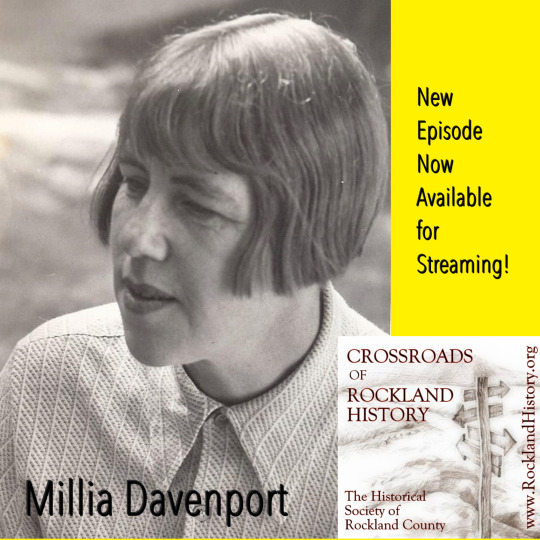
#ICYMI The new episode of Crossroads of Rockland History is now available for streaming. Listen at the link below or on all major podcast platforms!
____________________________
Episode originally aired on Monday, June 20, 2022, at 9:30am, on WRCR 1700AM
We turned our attention to the life and legacy of Millia Davenport. David Bisaha, Assistant Professor of Theater at SUNY Binghamton joined host Clare Sheridan to discuss this remarkable and trailblazing woman who lived most of her life in Rockland County. Among her many contributions include writing the definitive book of theatrical costume history, The Book of Costume. Published in 1948, it remains the gold standard. (Royalties from the book were donated to the New City Library.)
Born in Cambridge, Massachusetts, on March 31, 1895, to Charles B. and Gertrude Crotty Davenport, Millia Davenport lived in New City for more than 70 years. Her father and mother were biology teachers at Harvard and Radcliffe, respectively. They were genetic researchers and helped establish the Station for Experimental Evolution of the Carnegie Institute of Washington in Cold Spring Harbor, NY.
After attending Barnard and Parsons, Millia Davenport created artwork for and edited The Quill, a literary magazine. Later, she became one of the first female scenic design painters in America. She worked as a costume designer for a number of Broadway theater companies, including Maxwell Anderson's Playwrights Company and Orson Welles's Mercury Theater.
In 1981, she received an honorary doctorate in fine arts from the Parsons School of Design in Manhattan the same year that she received the highest honor given by the United States Institute for Theatre Technology for a lifetime of distinguished contribution to the performing arts. In 1991 the Costume Society of America established the Millia Davenport Publication Award recognizing excellence in costume scholarship.
Davenport died in 1992.
David Bisaha is a scholar and practitioner who studies performance design, theatrical space and architecture, and the history of theatrical creativity. He is an Assistant Professor in the Department of Theater at SUNY Binghamton. He specializes in the history of scenic design in the United States, mostly in the first half of the twentieth century, and in the more recent history of immersive and participatory performance. His other research interests include theatre historiography, cognitive sciences and performance, directing theory, and memory studies.
Bisaha’s current book project, American Scenic Design and Freelance Professionalism, is a cultural labor history of scenic designers and designing in the United States. At Binghamton, Bisaha teaches theater and performance history, dramaturgy, and theater theory in the MA and BA programs. He is the Curator of the Theatre Collection of the Department of Theatre, and is affiliate faculty and a steering committee member of the Material and Visual Worlds Transdisciplinary Area of Excellence (TAE). The Millia Davenport papers are housed there.
***
Crossroads of Rockland History, a program of the Historical Society of Rockland County, airs on the third Monday of each month at 9:30 am, right after the morning show, on WRCR Radio 1700 AM and www.WRCR.com. Join host Clare Sheridan as we explore, celebrate, and learn about our local history, with different topics and guest speakers every month. We are pleased to announce that we have begun loading our archived podcasts to all major Podcast platforms.
The Historical Society of Rockland County is a nonprofit educational institution and principal repository for original documents and artifacts relating to Rockland County. Its headquarters are a four-acre site featuring a history museum and the 1832 Jacob Blauvelt House in New City, New York.
www.RocklandHistory.org
#rocklandhistory#womenshistory#nyshistory#millia davenport#bookofcostume#costume design#set design#south mountain road#SoundCloud
0 notes
Text
Another #Caturday classic from today’s visit:

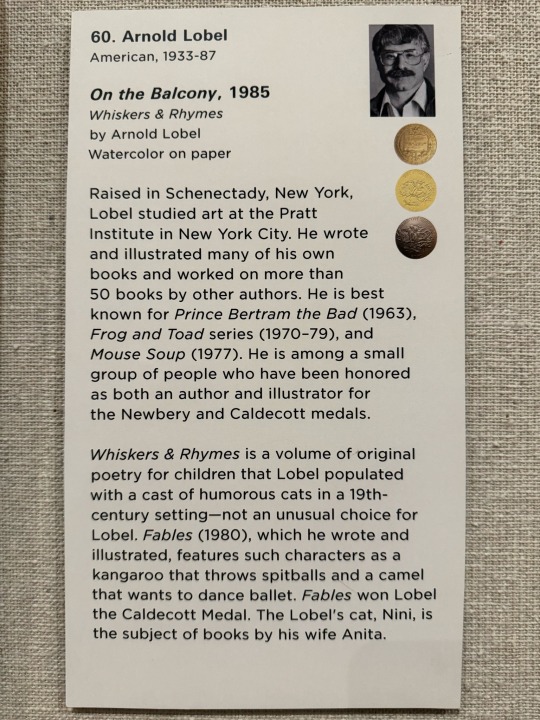
Arnold Lobel (American, 1933-87)
On the Balcony (from Whiskers & Rhymes), 1985
Watercolor on paper
now on display at “Childhood Favorites: 100 Years of Children’s Book Illustration” exhibition at Washington County Museum of Fine Arts
#animals in art#20th century art#museum visit#exhibition#American art#children’s book art#children’s literature#illustration#watercolor#painting#Arnold Lobel#cat#cats#cats in art#Caturday#1980s#Washington County Museum of Fine Arts
25 notes
·
View notes
Photo

folded in time
#original photograph#Washington County Museum of Fine Arts#elementoftheeye#world wide pinhole project
5 notes
·
View notes
Photo
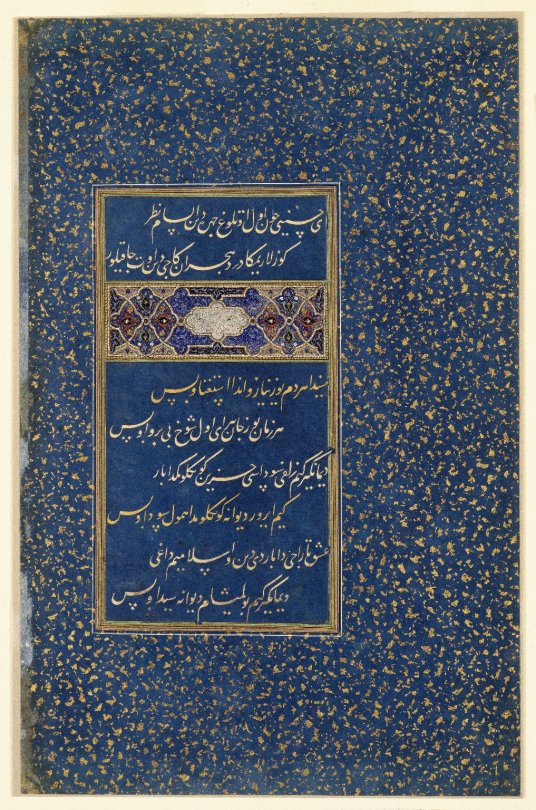
Folio of Poetry From the Divan of Sultan Husayn Mirza, Sultan 'Ali Mashhadi, ca. 1490, Brooklyn Museum: Arts of the Islamic World
These four couplets of poetry in fine nasta'liq script were not written with a pen. Instead, the letters were meticulously cut from colored paper and pasted onto the dark blue paper. This technique, known as qit'a, or découpage, is used on this leaf and other leaves of this dispersed manuscript of the Divan (Anthology) of Sultan Husayn Mirza (r. 1470-1506). Although we do not have concrete proof, this page has been attributed to the great master of calligraphy Sultan 'Ali Mashhadi on technical and stylistic grounds (Welch 1979, 170). A great-great-grandson of Timur (r. 1370-1405), Sultan Husayn Mirza ruled over the northeastern Iranian province of Khorasan from 1470 until his death in 1506. He was not only a patron of the arts, but also a poet of considerable talent. Along with his closest friend, Mir 'Ali Shir Nava'i (1440-1501), also a poet of great distinction, he was responsible for establishing Chaghatay Turkish as a major literary language (ibid.). The verses on this folio, from a ghazal, or sonnet, composed by Sultan Husayn Mirza himself, have been translated from Chaghatay Turkish into English by Professor Wheeler M. Thackston: O Husayni, when I cast a glance at the fiery countenance, fire catches in my eyes from the blow of the pain of separation. In me there are a hundred entreaties every moment; in him/her is nothing but disdain. Every moment I die a hundred deaths; that beauty is unconcerned. Say not that in your mournful heart is the melancholy over his/her tress, for in my mad heart is that same melancholy. My religion and Islam have been lost to love's plunder. Say not that I have only become mad for him/her. The word for "melancholy" (sawda) in the lines above also means "blackness," which accords with the blackness of the beloved's tress of hair. Other folios of calligraphic découpage from this manuscript are found in the Sadruddin Aga Khan Collection, the Freer Gallery of Art, Washington, D.C., the Los Angeles County Museum of Art, and in an album made for the Ottoman Sultan Murad III (r. 1574-95) now in the National Library of Austria (Vienna, Österreichische Nationalbibliothek Cod. Mixt. 313). [By Maryam Ekhtiar, from "Journey Through Asia" catalogue]
Size: 8 7/8 x 5 1/4 in. (22.5 x 13.3 cm)
Medium: Ink, opaque watercolors, and gold on indigo blue ground, with découpage and gold-flecked border
https://www.brooklynmuseum.org/opencollection/objects/57526
32 notes
·
View notes
Photo
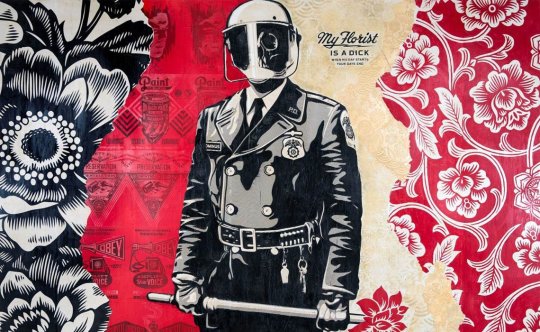
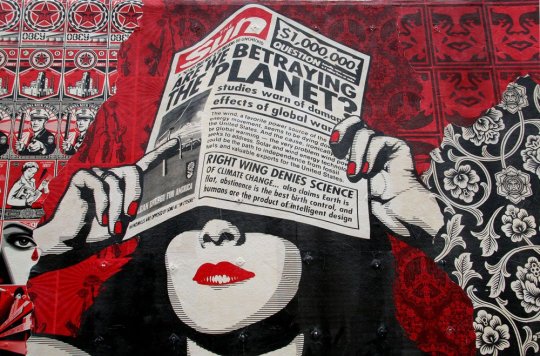
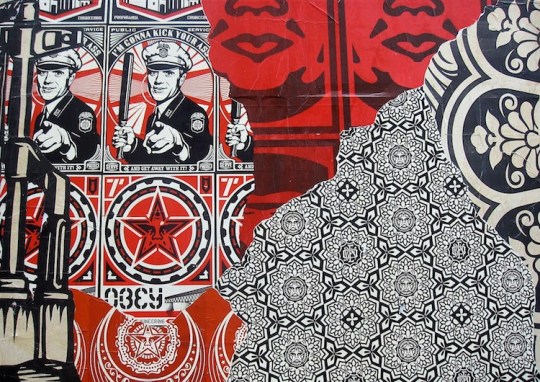

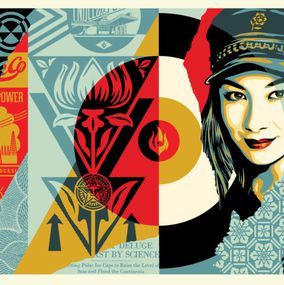

Shepard Fairey (born 1970) is an American contemporary artist, activist and founder of OBEY Clothing who emerged from the skateboarding scene. In 1989 he designed the "Andre the Giant Has a Posse" (...OBEY...) sticker campaign while attending the Rhode Island School of Design (RISD).
Fairey designed the Barack Obama "Hope" poster for the 2008 U.S. presidential election .
The Institute of Contemporary Art, Boston has described him as one of the best known and most influential street artists. His work is included in the collections at The Smithsonian, the Los Angeles County Museum of Art, the Museum of Modern Art in New York City, the Museum of Contemporary Art San Diego, the National Portrait Gallery in Washington, D.C., the Virginia Museum of Fine Arts in Richmond, and the Victoria and Albert Museum in London.His style has been described as a "bold iconic style that is based on styling and idealizing images."
https://en.wikipedia.org/wiki/Shepard_Fairey
3 notes
·
View notes
Photo


Picasso on Paper: The Artist as Printmaker 1923-72 by Skatole Grudnick
Via Flickr:
Picasso on Paper: The Artist as Printmaker 1923-72 first time in 51 years, Washington County Museum of Fine Arts will host an exhibition focusing on the iconic Spanish artist Pablo Picasso (1881-1973). Picasso on Paper:
0 notes
Photo



Jay Lynn Gomez (formerly Ramiro Gomez) was born in 1986 to Mexican immigrant parents in San Bernardino, California. In her Domestic Scenes series, she paints domestic workers within the images of wealthy lifestyles taken from home décor magazines. Using acrylic paint, Gomez adds nannies, gardeners, and day laborers to full-page advertisements from magazines, bringing forth the often invisible labor of those who work behind the scenes to make such luxurious lifestyles possible for the privileged.
Starting in 2009, Gomez worked as live-in nanny for a Los Angeles family for two years. During this time, she began the Domestic Scenes series, documenting her daily experiences and observations of other workers in the home and the neighborhood.
“Gomez’s treatment of the figures, who are nondescript and without discernible facial features, addresses the perception of invisibility and interchangeability of the workers while foregrounding the friction of their position as a universal concern within domestic labor. In an acute synthesis of stylistic treatment with concept, the artist mutes the individuals within the homes, yet she names each figure and describes his or her actions in the title of the piece, highlighting the worker’s presumed anonymity within this hierarchical class structure.” (p.120)
In March 2021, Gomez announced that she is a trans woman. At the time of the publication of Home—So Different, So Appealing, she had not yet identified as trans woman, and is listed under her former name, Ramiro Gomez.
Image 1: Ironies, 2013, Acrylic on magazine leaf, 11” x 8 1/2”
Description: A woman with dark hair sitting in a chair with a dog across from her in front of a bookcase.
Image 2: Domestic Scene, Beverly Hills, 2013, Acrylic on two magazine leaves, 11 1/2" x 16”
Description: A woman with long dark hair standing and looking out the window in a luxurious living room.
Image 3: Alma and Owen, 2013, Acrylic on magazine leaf, 11”x 8 1/2”
Description: A woman with dark hair standing in the luxurious living room while a small boy with blond hair crawls on the floor in front of her.
Home--So different, So appealing
Chon A. Noriega, Mari Carmen Ramírez, Pilar Tompkins Rivas.
Los Angeles, California: UCLA Chicano Studies Research Center Press: Los Angeles County Museum of Art; Houston, Texas: Museum of Fine Arts, Houston, [2017]
Distributed by University of Washington Press.
288 pages: illustrations
English
HOLLIS number: 990152435020203941
#jaylynngomez#latinxartist#Latinxandhispanicheritagemonth#domesticworkers#contemporaryartist#Americanartist#transwomanartist#fineartslibrary#harvardfineartslibrary#Harvard#harvard library#harvardlibrary
14 notes
·
View notes
Text
Helen Frankenthaler at Gagosian Grosvenor Hill, London
May 18, 2021

IMAGINING LANDSCAPES
Paintings by Helen Frankenthaler, 1952–1976
June 17–August 28, 2021
20 Grosvenor Hill, London
__________
I had the landscape in my arms when I painted it. I had the landscapes in my mind and shoulder and wrist.
—Helen Frankenthaler
Gagosian is pleased to present Imagining Landscapes: Paintings by Helen Frankenthaler, 1952–1976, an exhibition of fourteen paintings from the collection of the Helen Frankenthaler Foundation, several of which have never been exhibited before.
The references to landscape that are inherent in these paintings shift between subtle and explicit, as critic E. C. Goossen observed in 1958. All are characterized by an extraordinary variety of line and color. The earliest of them—painted in 1952, before Frankenthaler’s breakthrough development of soak-stain painting later that year with Mountains and Sea—is the work of an already mature artist: an invented panorama with suggestions of palm fronds and mountain peaks. The next belongs to a small group of canvases with drawn forms that Frankenthaler painted on her honeymoon with Robert Motherwell in the southwest of France. And four canvases from 1961—Fable, Beach Scene, Square Figure, and After Rubens—show her simplifying her drawing and making it more calligraphic, even as she continued to create figural as well as landscape references.
In three canvases from 1963, a major change is evident in Frankenthaler’s approach. Juxtaposed areas of lush stained color replace the lines of the earlier paintings, their irregular borders evoking the boundaries of natural forms. The titles of these works—Narcissus, Yolk, Sea Goddess—invite interpretation of their sometimes aqueous, sometimes cloudy forms in the manner that Leonardo da Vinci advised painters to look at stained walls and see in them images of the natural world. Even as Pop art was recuperating explicit depiction, and Color Field painting purist abstraction, Frankenthaler maintained in her own way an art of allusion—the richness of ambiguous reference—and cultivated a complexity akin to the volatility of the physical universe.
In the imposingly large Cape Orange of 1964, Frankenthaler advances this approach with flatter, more opaque color to a bolder effect, suggesting a topographical map. And the pair of canvases from 1971, Orange Hem and Red Travels, simplify the effect further, evoking details of landscape seen from above—perhaps, the movement of water around an obstruction and a view into a cleft or onto a stretch of coastline, respectively. In both cases, the rectangle of the canvas substitutes for a framed view. The final two works in the exhibition, Chill Factor (1973) and Sphinx (1976), reintroduce earlier features to the format: the former with its meandering filaments of drawing and atmospheric color; the latter, a reprise of the bipartite structure of Narcissus (1963), with memories of the fluid, centralized composition of Mountains and Sea.
A catalogue featuring a new essay by art historian Robert Slifkin along with three historical texts will be published to accompany the exhibition. In addition, a room of paintings by Frankenthaler is installed at Tate Modern, London, until November 2021. Helen Frankenthaler: Radical Beauty, the first major UK exhibition of Frankenthaler’s woodcut prints, will open at Dulwich Picture Gallery, London, on September 15, 2021.
Helen Frankenthaler (1928–2011) is represented in major public and private collections worldwide. Her career has been the subject of three major monographs and numerous institutional exhibitions, including the Jewish Museum, New York (1960); Whitney Museum of American Art, New York (1969, traveled to Whitechapel Gallery, London; Orangerie Herrenhausen, Hannover, Germany; and Kongresshalle, Berlin); A Paintings Retrospective, Modern Art Museum of Fort Worth, TX (1989–90, traveled to Museum of Modern Art, New York; Los Angeles County Museum of Art; and Detroit Institute of Arts); Prints, National Gallery of Art, Washington, DC (1993, traveled to San Diego Museum of Fine Arts; Museum of Fine Arts, Boston; Contemporary Arts Center, Cincinnati; and Machida City Museum of Graphic Arts, Japan); Paintings on Paper (1949–2002), Museum of Contemporary Art, North Miami, FL (2004, traveled to Edinburgh Royal Scottish Academy, Scotland); Against the Grain: The Woodcuts of Helen Frankenthaler, National Gallery of Australia, Canberra (2005); Giving Up One’s Mark: Helen Frankenthaler in the 1960s and 1970s, Albright-Knox Art Gallery, Buffalo, NY (2014–15); Pittura/Panorama: Paintings by Helen Frankenthaler, 1952–1992, Museo di Palazzo Grimani, Venice (2019); Helen Frankenthaler Prints: Seven Types of Ambiguity, Princeton University Art Museum, NJ (2019); and Abstract Climates: Helen Frankenthaler in Provincetown, Parrish Art Museum, Water Mill, NY (2019, originated at Provincetown Art Association and Museum, MA, in 2018).
_____
Helen Frankenthaler, Fable, 1961, oil and charcoal on unsized, unprimed canvas, 94 1/2 × 99 inches (240 × 251.5 cm) © 2021 Helen Frankenthaler Foundation, Inc./Artists Rights Society (ARS), New York
29 notes
·
View notes